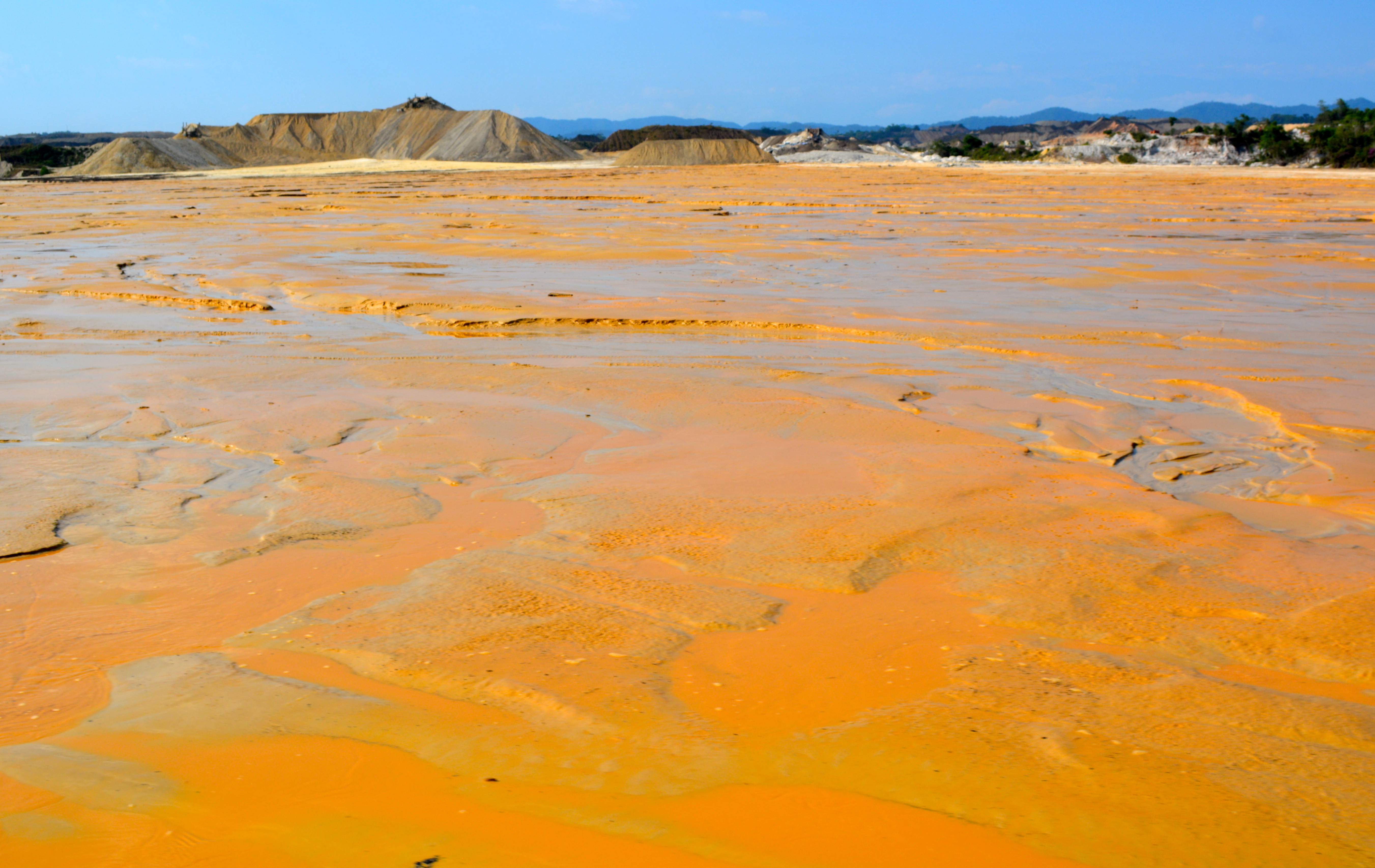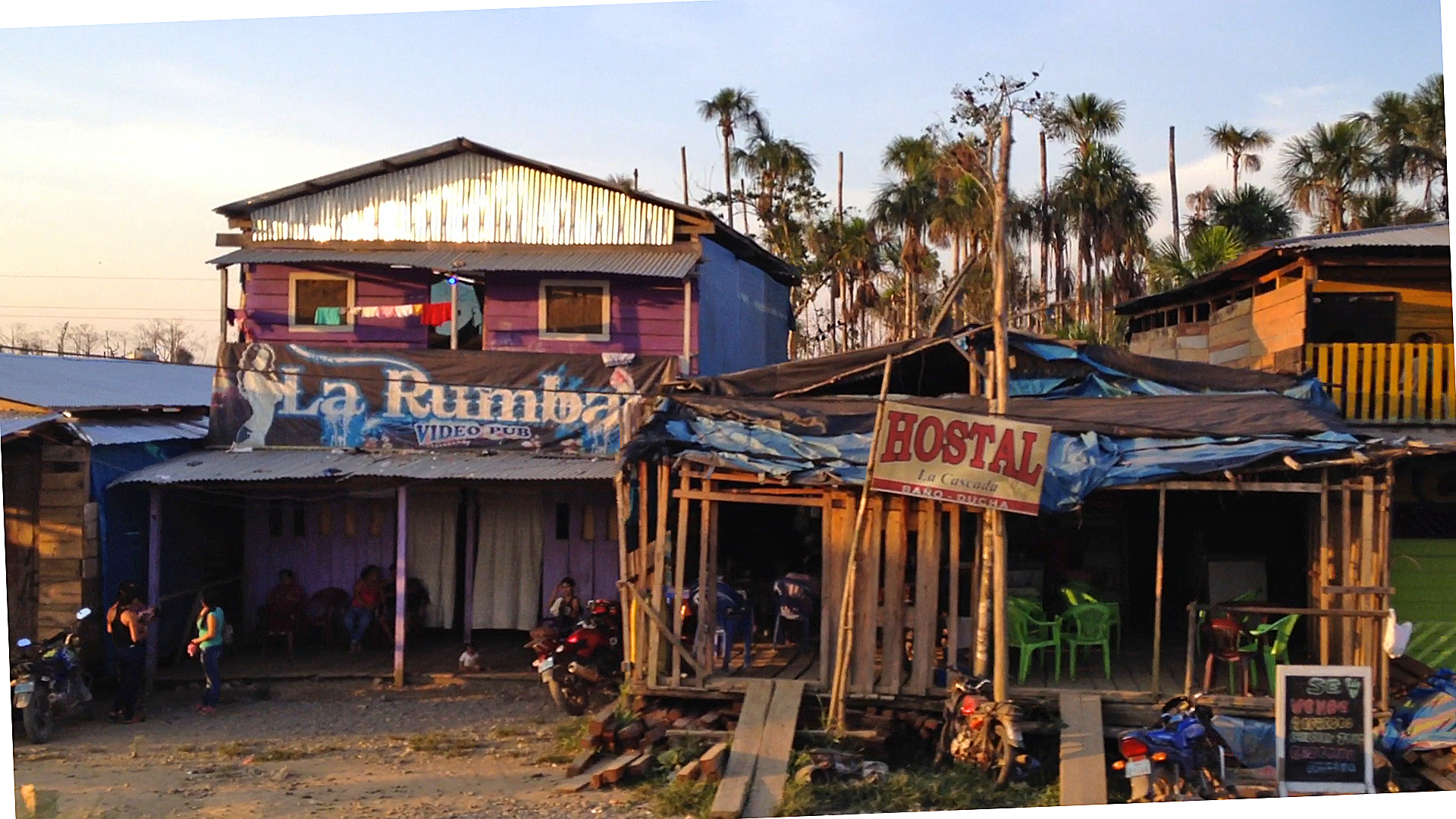Bringing fair trade to artisanal gold mining

A Swiss-sponsored responsible mining initiative is offering artisanal gold miners direct access to markets, better environmental respect and more transparency. swissinfo.ch investigates whether the Better Gold Initiative (BGI) can live up to its promises.
Feliciano Quispe arrived in the coastal desert in 1988 with only a backpack, a shovel, a compass and a water bottle. The Peruvian economy was a shambles at that time and Quispe needed work. So he began to look for gold.
“I didn’t have anything, not even a bicycle to move around,” he explained. “We had to live in the desert, in a hole or a cave.”
Together with a few other pioneering miners, he began by selling a few kilos of ore to refiners.
Quispe, now the general manager of the Españolita mine in the southern desert, some 600 kilometres south of the capital, Lima, recalled how together with 47 other artisanal miners, he founded a small mining company, after feeling cheated by gold ore buyers.
The cooperative mine now processes its own gold, about 14 kilograms (kg) a month.
Cutting out middlemen
Españolita, or Medsursa as the company is also known, expects to soon begin supplying the BGI. It’s the latest responsible gold project formed through an alliance between Switzerland’s State Secretariat for Economic Affairs (SECO) and the Swiss Better Gold Association, a group of major refiners and jewellers, alongside Max Havelaar Switzerland, a fair trade organisation.
The programme aims at bringing gold miners closer to customers in Switzerland, thus offering producers better prices through the elimination of intermediaries, and creating greater transparency and traceability of the mineral for the end buyer. It also promises miners access to special funds as well as financing for sustainable development projects.
Switzerland’s involvement in the initiative stems from its key role in the international gold trade, with some 70% of all gold globally transiting through the country. And gold represents 97% of Swiss exports from Peru, the world’s fifth largest producer of the metal.
According to official Peruvian statistics, 190 tons were exported from Peru to Switzerland in 2011.
But so far only a small amount of that – about 50kg – was exported from the programme’s first producer, Sotrami. Thomas Hentschel, BGI director, says though his expectation is to reach two to three tons annually in four to five years.
Christoph Wiedmer, director of the Bern-based Society for Threatened Peoples, praised BGI’s work on the chain of custody and for its focus on specific producers, but added that it was a very niche market and the initiative needed greater funding than the initial CHF2.9 million.
Third-party certification groups, Fairmined and Fairtrade, offer certification to small and artisanal miners, while respecting certain social and environmental standards. Fairmined and Fairtrade are similar in promoting decent working conditions, human rights and the gradual elimination of mercury in small-scale mining. The Responsible Jewellery Council (RJC), which most high-end jewellery businesses are signed up to, provides standards that are essentially applicable to large-scale miners. The World Gold Council, too, offers certificates for conflict-free gold, valid for large mining companies.
Ethics cost
One problem for end buyers interested in clean gold is that there are a number of certification programmes – not just the BGI – and a limited supply of certified gold. While it is estimated that 15-25% of gold worldwide comes from artisanal and small miners, Fairtrade activist Greg Valerio, told swissinfo.ch that only 600kg annually originates from Fairtrade and Fairmined sources.
“Everyone is fighting over the same stuff,” Assheton Carter, an expert on responsible gold, explained. “The big [jewellery] brands take a lot of gold – tons rather than ounces – and that comes from the four major [Swiss] refineries, who have a high quality product that the brands want.”
He says jewellers “don’t want to make claims that what they sell is green or fair [since] the public will ask what percentage of the product is actually fair trade”.
Costs involved in the responsible gold supply chain are another issue. Until the BGI was launched, purchases of certified fair trade gold had been complicated by the steep premiums charged to buyers, to up to 25% above the international gold spot price, according to Carter.
The BGI’s launch in November comes just months before the Peruvian government’s programme to certify small-scale miners enters into effect and amidst a growing polemic within the gold industry over its environmental footprint, as well as concern over health and labour issues.
Bettering the gold supply
Lima, which will host the COP20 climate change conference in November 2015, has given informal miners until April to concord with environmental, social and fiscal measures or face sanctions.
Peru estimates that there were 100,000 illegal miners before the process was started two years ago. Widespread deforestation, mercury pollution, alleged people trafficking and forced labour practices are amongst the issues generated by illegal mining that the formalisation process wants to curb.
In the southeastern jungle region of Madre de Dios, the government is expected to come down particularly hard on illegal miners due to wide-ranging environmental damage that was brought to the public’s attention by the Carnegie Institute in October.
On a visit to Huepetuhe, at the heart of the region’s mining activities, informal miners told swissinfo.ch about how, after decades of government support in the form of granting mining concessions or easy credit, they believed Lima was now determined to obliterate domestic artisanal miners in favour of large-scale foreign mining enterprises.
According to the World Gold Council, just the top four mines in Peru, which are majority foreign-owned, contributed 14% of government tax revenues in 2011.
Beyond Huepetuhe’s shantytown composed of trading posts, bodegas and cheap bars and across the enlarged silted up river, the land has been razed of its vegetation, transformed into a dusty, sandy landscape.

Throughout Madre de Dios, excavators and other heavy equipment dig for gold before the miners “wash” the soil with high-pressure hoses and separate the ore with the use of highly-toxic mercury.
The distinction between informal and illegal miners can be rather vague. Informality generally refers to miners who work beyond the margin of the law, yet who have commanded a certain degree of staying power. Miners may lack property rights, or fail to pay taxes, respect basic environmental or social standards, or all of the above. Officials tend to speak about illegal mining once a certain threshold of abuses is exceeded.
Accommodating informal miners
While the Españolita mine has already been formalised, few others from Madre de Dios are expected to be certified by April, according to Ernesto Raez Luna, an advisor to the environment ministry.
Already, there is concern that many illegal miners will continue to move to areas beyond official control deeper into the jungle.
Quinn Kepes of the labour non-governmental organisation, Verité, which recently published a report on illegal mining in Peru, told swissinfo.ch how he suspected illegal miners in the southern region of Arequipa would bring gold to processors, who in turn sell the product as originating from legal sources.
In the Madre de Dios capital, Puerto Maldonado, gold dealers told swissinfo.ch how their suppliers fudge their paperwork.
For Miguel Santanilla, chief researcher at the Instituto del Peru, document trafficking is a known fact. He says that since the introduction of the new government policies “illegal gold is turned into legal gold through the paperwork, with the help of authorities”.
For people like Quispe and the Españolita mining cooperative, the BGI plan has nonetheless provided hope, as well as recognition for their vision. As Casiano Palomino, another Españolita associate, puts it: “The Swiss responsible gold initiative is a force that allows us to move ahead, and provide inspiration to others involved in this activity… that we can also help others.”
The Swiss government announced on December 13 that it would publish details on the origin of Switzerland’ gold imports and exports beginning in 2014. From January, foreign trade statistics will include a country by country breakdown for the first time since 1981.
The change means Switzerland will be meeting international statistical standards and contributing towards transparency in the industry overall, according to a statement released by the government.
The government has not taken a decision on releasing retrospective data.

In compliance with the JTI standards
More: SWI swissinfo.ch certified by the Journalism Trust Initiative
You can find an overview of ongoing debates with our journalists here. Please join us!
If you want to start a conversation about a topic raised in this article or want to report factual errors, email us at english@swissinfo.ch.